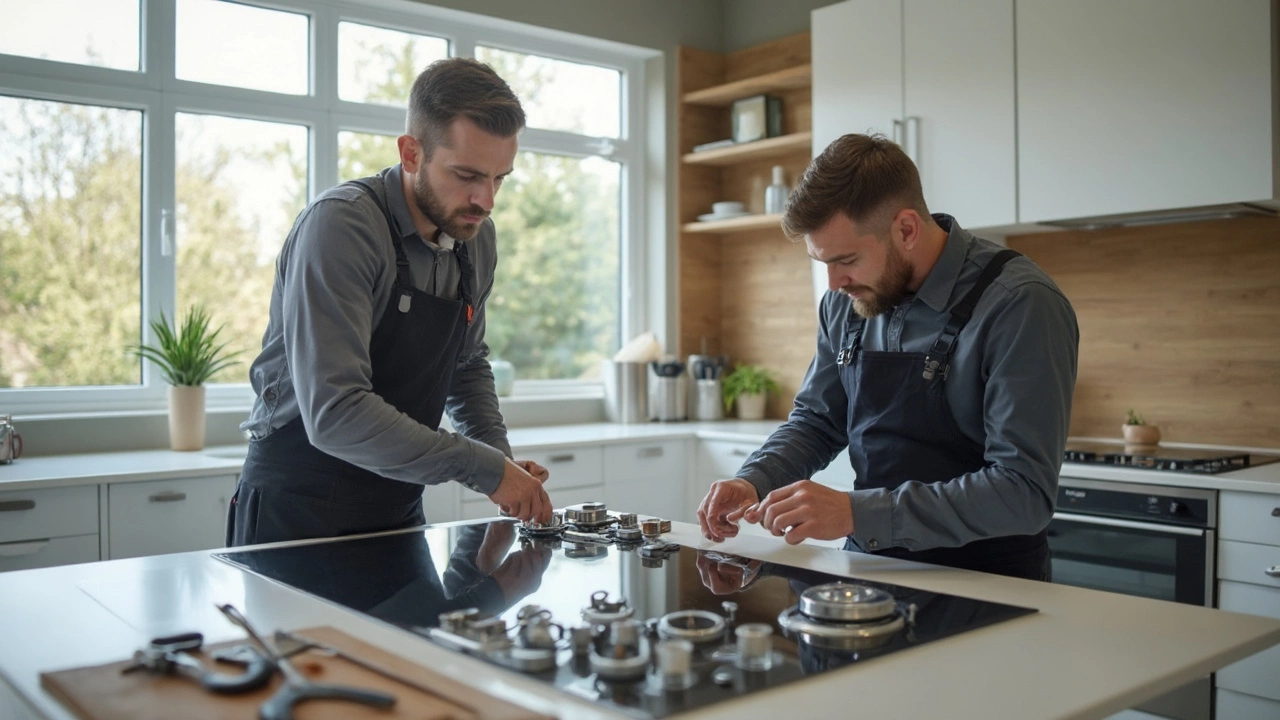Kitchen Hob Maintenance: Easy Tips to Keep Your Hob Working Perfectly
Whether you cook on an electric glass top or a gas burners, your hob sees a lot of heat, spills, and mess. A little care every week can stop stubborn stains, burnt‑on food, and safety hazards before they become big problems. Below are the most practical steps you can do right after you finish cooking.
Everyday Cleaning Routine
Start with a cool hob. Trying to scrape a hot surface can crack glass tops and burns your fingers. Wipe the whole area with a soft, damp cloth to remove loose crumbs. For electric hobs, a spray bottle with half water, half white vinegar works wonders – it cuts grease and leaves no residue.
Next, apply a few drops of a gentle dish‑soap to a non‑abrasive sponge. Gently rub the surface in circular motions. If you see a sticky spot, let the soap sit for a minute; it will loosen the grime. Rinse the sponge well and wipe again with clean water to get rid of any soap film.
Dry the hob with a microfiber cloth. This step prevents water spots on glass tops and stops rust from forming around gas burners. For gas hobs, make sure the burner caps are lifted and clean any food particles that may have fallen between them. A soft toothbrush works great for those tight corners.
Preventing Common Problems
Spills happen, but you can limit damage by cleaning them up immediately. Sugar, salt, or oil left to bake on a surface can etch the glass or corrode metal parts. If you notice a leak around a gas burner, turn the knob off, let the hob cool, and check the connection for wear. A loose fitting can cause uneven flames or a smell of gas.
Every few months, give the hob a deeper treat. For electric hobs, sprinkle a thin layer of baking soda over the surface, then spray with a little water to make a paste. Let it sit for 15 minutes; the mild abrasive will lift stubborn stains without scratching. Wipe it clean with a damp cloth and dry.
Gas hobs benefit from a quick check of the regulator and hose. Look for cracks or frayed sections. If anything looks worn, replace it right away – it’s cheaper than a full‑service call later. Also, remove the burner caps and soak them in warm, soapy water for 10 minutes. A soft brush will clear any clogs, keeping the flame even.
Don’t forget the control knobs. They collect grease over time, which can affect how they turn. Remove them if they’re snap‑on, clean with a brush and mild detergent, then dry completely before re‑installing.
Finally, schedule a professional check once a year. A qualified technician can inspect wiring, gas lines, and internal components that you can’t see. This simple yearly visit can catch wear early and extend the life of your hob by years.
Keeping your hob clean and checking for wear doesn’t take long, but it saves you from costly repairs and keeps your kitchen safe. Follow these steps each week, do a deeper clean every few months, and call a pro yearly – and your hob will stay reliable for the long haul.
The Real Cost of Fixing a Glass Hob
0 Comments
Fixing a glass hob can be tricky, and the costs can vary based on several factors. This article breaks down what you need to know about repair costs, including factors like damage type and parts replacement. It also offers tips on when to repair and when to replace your hob. Understand what influences the cost and get some practical advice to decide the best course of action.
Read More